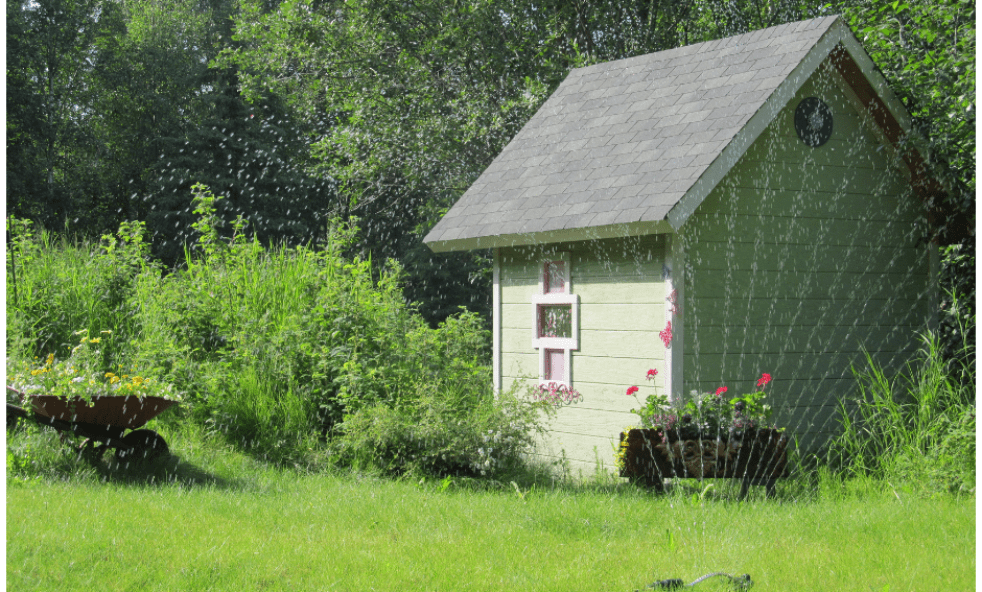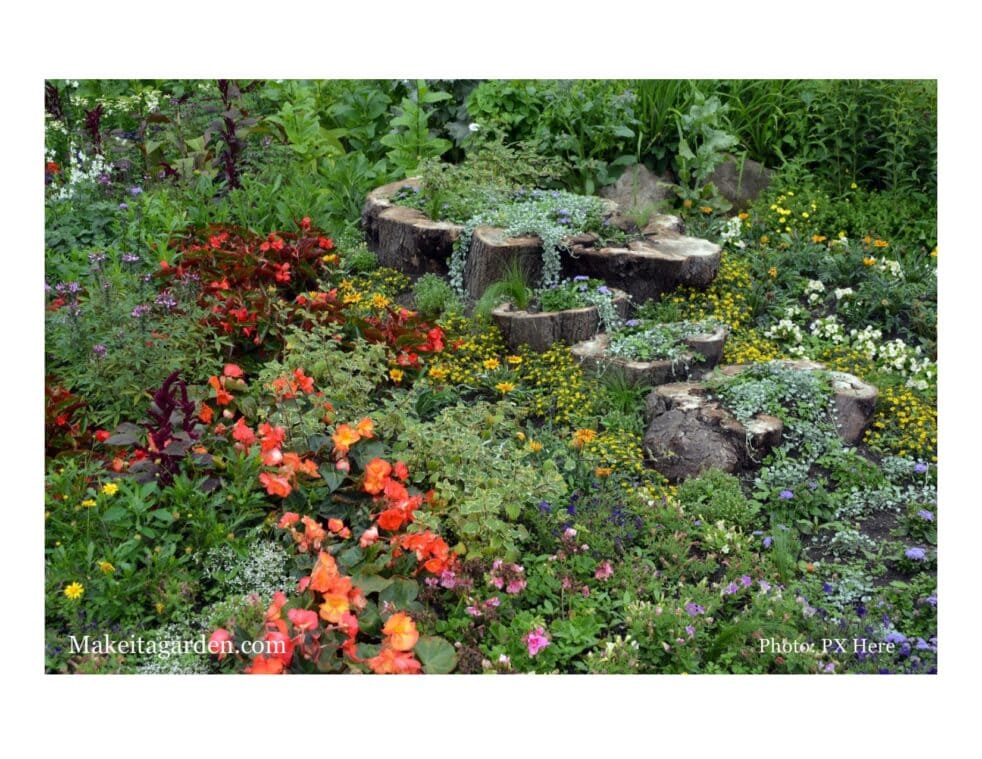
Yard & garden design goes into the wild
Garden Design Series
The columbine sway in the afternoon breeze. Tall spikes of purple lupine peek over the top of a fern leaf. All around yellow sedum is in full bloom; bees buzz from flower to flower. A spider scampers across a small boulder and disappears into nook behind dainty hair bells. It’s the perfect day to be outdoors! Rocky Mountain National Park? Nope, it’s your neighbor’s backyard. And a river runs through it! Well, it’s just a dry stream bed but it sure looks real.
What’s driving this trend?
Over the years, natural landscapes have been on the rise in yard and garden design. It’s showing up prominently on sites like Houzz and HG Magazine. In some residential neighborhoods, it’s replacing a good bit of lawn bringing on compliments along with a few raised eyebrows. What’s behind this trend? The most obvious is that with ever increasing urban sprawl and our technological world, homeowners simply have a renewed appreciation for the simplicity of nature. You may not own a cabin in the woods, but you can bring some of the woods into your backyard.
But it’s also largely due to the influence of the environmental movement. For more than a decade it has advocated for natural meadows over traditional lawns. It’s not a bad idea, either. Lawns require a lot of water which is scarce in some areas of the country. Some communities have water conservation districts which regulate the days of the week and even set the hours in which homeowners can water their lawns.
Above and beyond that, we’ve learned about the negative effects of chemicals in fertilizers and weed control products used to achieve that coveted deep, green turf. Such chemicals are harmful to people and pets. They leach into water tables and then local rivers and streams. Then, there’s an opposition of sorts against noisy lawn mowers which require gas and oil to operate.
All controversy aside, the purpose of this article is simply to introduce natural landscapes as a yard and garden design option. It’s also one this writer happens to love. I’m guessing that if you’re reading this, it’s something you love, too!
What’s Covered:
- What is meant by the term “natural”?
- What “natural landscapes” are and are not?
- Are they really maintenance free?
- Options for the small budget
- Some things to consider

What is meant by “Natural” landscaping?
Natural landscaping is a yard or garden design style that incorporates elements found in nature. But it’s not limited to plants and trees. Think about the last time you went for a hike? You saw rocks or boulders, downed logs covered with moss, and perhaps a small creek or pond. You see a certain randomness…but at the same time, a very distinct sense of order.
Natural landscapes, then, are a carefully constructed effort to “naturalize” a setting to make it appear as it might along your favorite trail, though on a much smaller scale. The hard part is to make it appear like it has always been there. To make it look “natural”! Therefore, it’s not a cheap landscaping option. The cost of river rock alone has skyrocketed and handling large boulders requires some expertise. But when done well, the effect is very impressive!
What natural landscapes are and are not
First off, ‘natural landscaping’ is not anti-lawn and it’s not exchanging all your favorite greenhouse flowers for wild ones. To the contrary, those marigolds (as well as other popular annuals and perennials) fit right into the scheme of things. They supply a continuation of color long after native blooms expire. You’re just showcasing them in a more naturalized setting as opposed to a more traditional garden design.
Regarding lawns, many homeowners don’t buy into the environmental argument one iota. Instead, they’re looking to change the appearance of their yard. Lawns can be stale and boring. Most of them have been leveled by housing developers for drainage and ease of care. Some folks simply long to have something a little more interesting to look at from the kitchen or living room window. Natural landscaping can introduce some variety into the backyard by adding some rolling hills to the terrain. A dry creek bed gives the semblance of a creek that is still refreshes the soul.
So, its not about eliminating the lawn, but rather to reduce the footprint. Most people want to retain some open areas of grassy lawn that makes it possible to sit outside and enjoy their backyard. To complete the ‘experience’, they may put in a fire pit for roasting hot dogs or making s’mores. If you have a large enough yard, its entirely possible to just do a corner “pocket” of natural landscaping so there’s still a play area or room for the dog. It’s up to you to decide how much or how little or to what degree to go “natural”.
A word about Xeriscaping:
The term “xeriscaping” refers to planting indigenous species of plants and trees that don’t require as much water. They survive quite nicely on what little precipitation nature provides for that region. For hotter and dryer climates, lawns are just not a practical option. Trying to keep them looking nice requires quite an effort. But there’s such a wide variety of plants in this category that substitution just makes sense. Plus, they require much less time and energy than a lawn would.

Maintenance Free?
People always want to know if natural landscapes are maintenance free. The answer is, not exactly. It’s more accurate to say that it’s lower maintenance. You won’t need to water as much. Depending on what you plant, you’ll still need to do weeding, pruning, trimming or dividing perennials. Otherwise, it can get pretty straggly looking.
But compare that to lawn care. There’s the watering chores…hoses, washers, sprinklers, automatic timers. Then there’s the mower itself. Gotta get it tuned up once in a while, change out the blades. If it’s electric, you have lengthy extension cord. If it’s gas operated, there’s fuel and oil. You have to buy all this stuff and store all this stuff somewhere.
The benefit of natural landscaping is that you have much less area to mow, which translates to lower costs. But the reality is, nothing is 100% maintenance free.
Options for the small budget

The key to landscaping on a small budget is to scale down. It just so happens that natural landscaping can look great, even in just one corner of the yard. You can collect smaller rocks from along the roadside, or stream beds as long as its not on private property or in park land. In my younger years, neighbors would see me traipsing up and down our dirt road with my little red wagon scouting for the largest rocks I could mange to build my rock garden.
Old sections of logs are not hard to come by either. People clearing lots or ripping out tree stumps are often happy to offer it free for the taking. Check out wood lots, too! Hollowed out stumps make great planters for flowers or wild grasses. Or, use them as a stand to elevate a basket of flowers or to set out a bird bath or bird feeder. As they decay, stumps are host to mosses and fungus that are a natural part of the eco-system. They can be quite interesting to learn about.
Another way to save is to buy baby perennials, trees and shrubs. I did that all the time. It may take them a few years to mature and/or reach a flower stage, but they cost a whole lot less! They’re so much easier to transplant when smaller as well! Finally, consider getting a large package of wildflower seeds from your local nursery. It’s cheapest to buy them in bulk that way. Plus, a higher volume of seed sown directly outdoors will literally explode in summer and give you that meadow look that’s so rewarding!
Above all, remember that most yard and garden transformations take a few years to really start to look like something.

Some things to consider
Believe it or not, natural landscaping has come under scrutiny, particularly where HOAs (Home owner Associations) or certain local ordinances are concerned. Why? What some people call “wildflowers” fall under certain definitions of weeds. So, depending on where you live, I advise checking around first, before starting a major overhaul of the backyard.
Also, you want to ensure that what you are planting is not invasive. Invasive plants are those that can quickly spread and take over and are hard to reign in. They can choke other other critical species, and start a chain reaction that has severe consequences on local eco-systems. Before you plant, (especially if you’re new to an area) check with your city’s horticulture expert or even the guy or gal who writes the weekly garden column in your local newspaper. Here’s a few other resources:
- Extension Service
- Local garden clubs (they may not have a website, but most of them have a Facebook Page)
- Greenhouse or Nursery
I managed to rescue and preserve some natural wildflowers and ferns on my property before they brought the bull dozers and excavators in. And re-planted them in various places. I knew they would already do well because they originate in this area and all the conditions are here naturally that they like to thrive. And wild roses around shed
My wildflower rescues:
When I purchased my lot a few years ago, I was excited to see what was naturally growing there. It would tell me a lot about the climate and natural soil conditions. Even though it’s heavily wooded, it’s also very dry. I decided to dig up and transplant some of the wildflowers and ferns that were growing right where the driveway and foundation were going in.
The arctic rose (rosa acicularis) is abundant in these parts. In early June, I’m surrounded by a sea of pink. Whenever a breeze blows, I catch a faint whiff of their perfume.
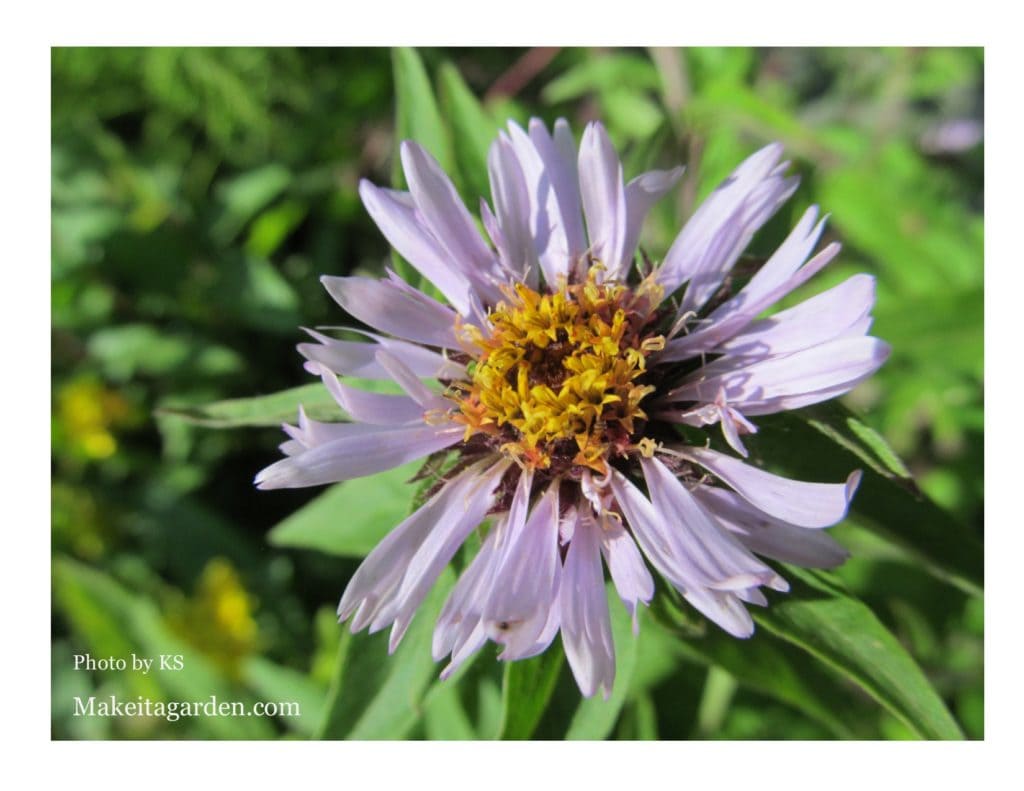
Siberian Aster 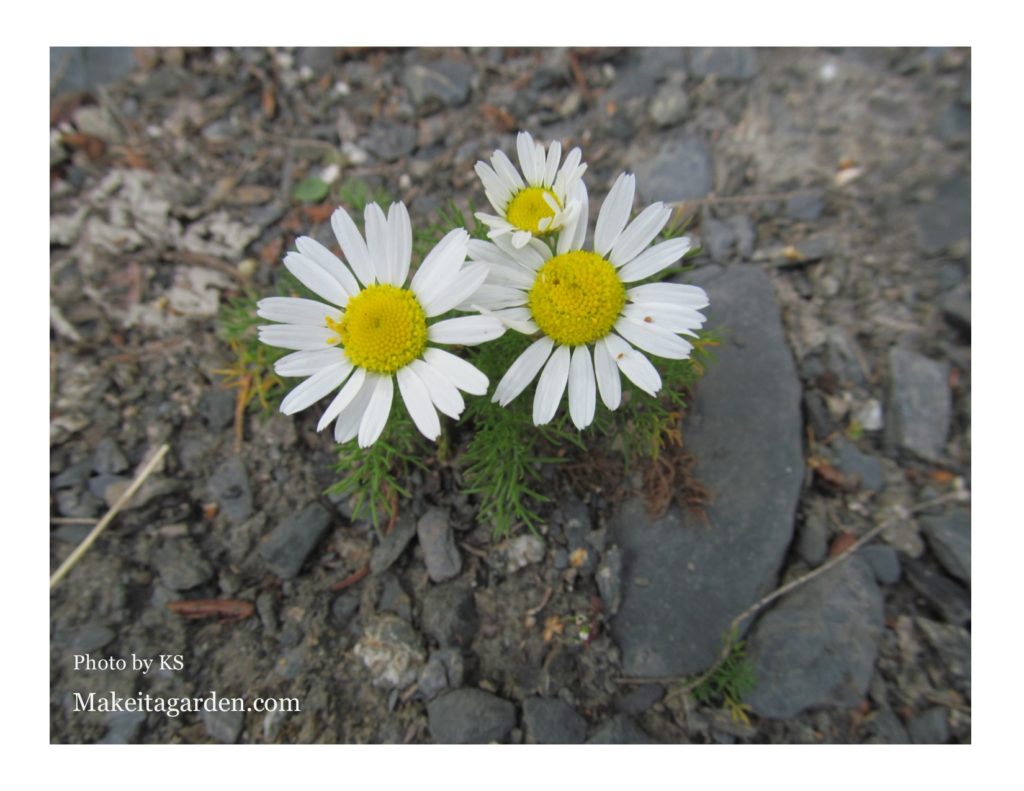
Chamomile 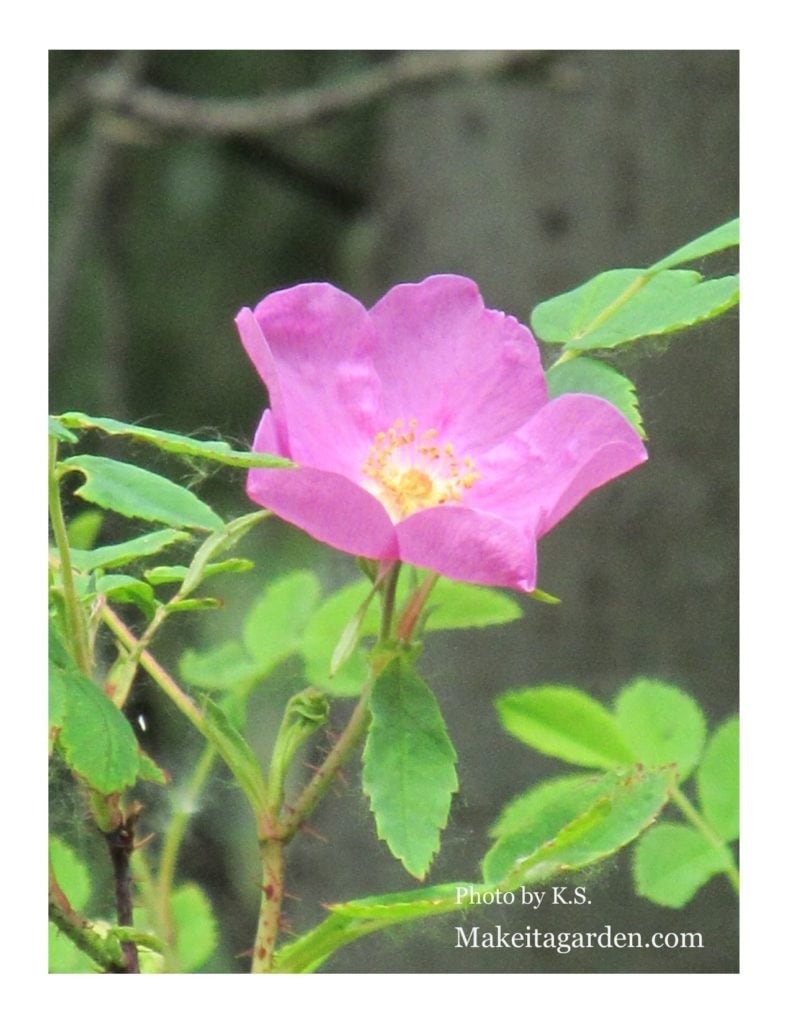
Arctic Rose 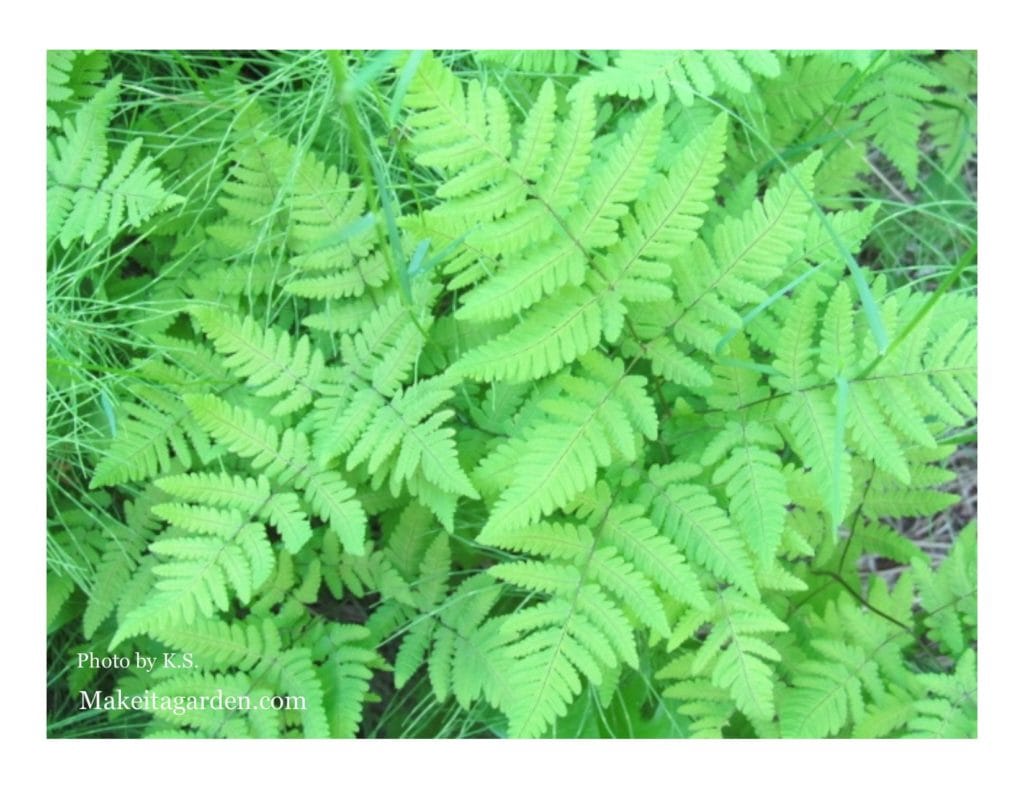
Wood Fern
In Conclusion
I hope this article was helpful to you in learning about natural landscaping. It’s my personal view that bringing nature back into our suburban neighborhoods is the best landscaping trend there is. In fact, your backyard can become a certified wildlife habitat thru the National Wildlife Federation. Learn how HERE.
When visitors come, they can see some of the local wildflowers in bloom right in your backyard. What better way to get up close and personal with the environment on a daily basis? You’ll be amazed at what you see there!

About the writer:
Kristen Spencer is an artist and garden blogger. She co-wrote and directed the local video documentary “Our Wild Backyard”, a natural history of her beloved Chugach State Park near Anchorage, Alaska. She makes her home on five wooded acres where her love of perennials and wild flowers inspired her to produce “Make it a Garden” blog-a-zine.
More posts about garden styles & decor
How to create the perfect Rustic Garden
Garden design trends for the small budget
How to get the look you love for your garden (choosing your style)
The form you have selected does not exist.
